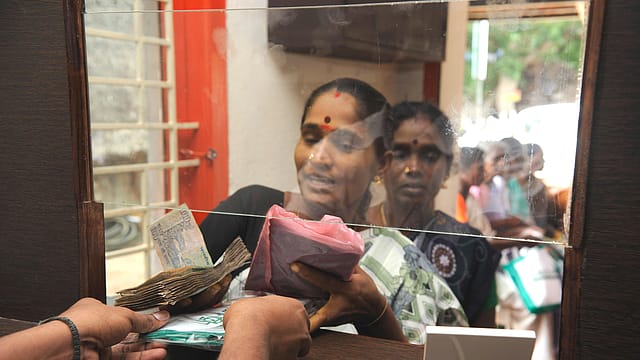Smaller banks, bigger pains
ADVERTISEMENT

The demonetisation drive of November 2016, by the Narendra Modi led government has redefined the 'normal' for many sectors, but it has been particularly tough on banks.
A recent report by rating firm India Ratings and Research alludes that demonetisation played a crucial role for banks, as the deadlines set to exchange delegalised currency notes saw huge deposit mobilisation across the banking system.
During FY17-FY18, many public sector banks used higher retail deposit mobilisation along with shrinkage in credit growth to retire large amount of bulk deposits, says the report.
Demonetisation aided the process, with current account saving account (CASA) ratio for the sector witnessing an uptick of 450 basis points (100 basis point make a percent) to 38.7% at FY17. The current fiscal has witnessed normalisation of deposits garnered on the back of demonetisation; the credit growth of the system rose to 9.1% as opposed to 2.8% in FY17, the report highlights.
India Ratings and Research expects private sector banks and large public sector banks to benefit from early signs of macro revival in FY19. "This will enable them to start the credit growth," the report says. Though the report has been largely optimistic about growth in the larger banks' cluster, it has also warned that credit costs for these banks would begin trending downwards through FY19.
November 2025
The annual Fortune India special issue of India’s Best CEOs celebrates leaders who have transformed their businesses while navigating an uncertain environment, leading from the front.
“A large stock of corporate stressed assets and strong pickup in non-collateralised retail lending would remain key monitorables,” the report says further.
Post the Reserve Bank of India’s asset quality review and annual divergence exercise, most of the large leveraged corporate exposures have seen a fair bit of recognition either in the form of NPAs or restructured assets. India Ratings and Research notes that an additional 1% of stressed assets (as of September 2017) could slip into the non-performing category, primarily from the standard restructuring and failed strategic restructuring schemes.
The report also suggested a negative sector outlook for small and mid-sized state-owned banks through FY19. Midsized banks would be the worst hit, considering their proportionally swollen treasury books after a period of muted credit and large deposit growth, and a steeper treasury profit booking in FY17. Further, owing to their weak capital position and disproportionately large stock of unrecognised stressed assets, small and mid-sized public sector banks will find it increasingly difficult to grow, the reports adds.
Clearly, the going will be tough for the banking industry. But, this time the smaller banks will find it tougher to live through.
